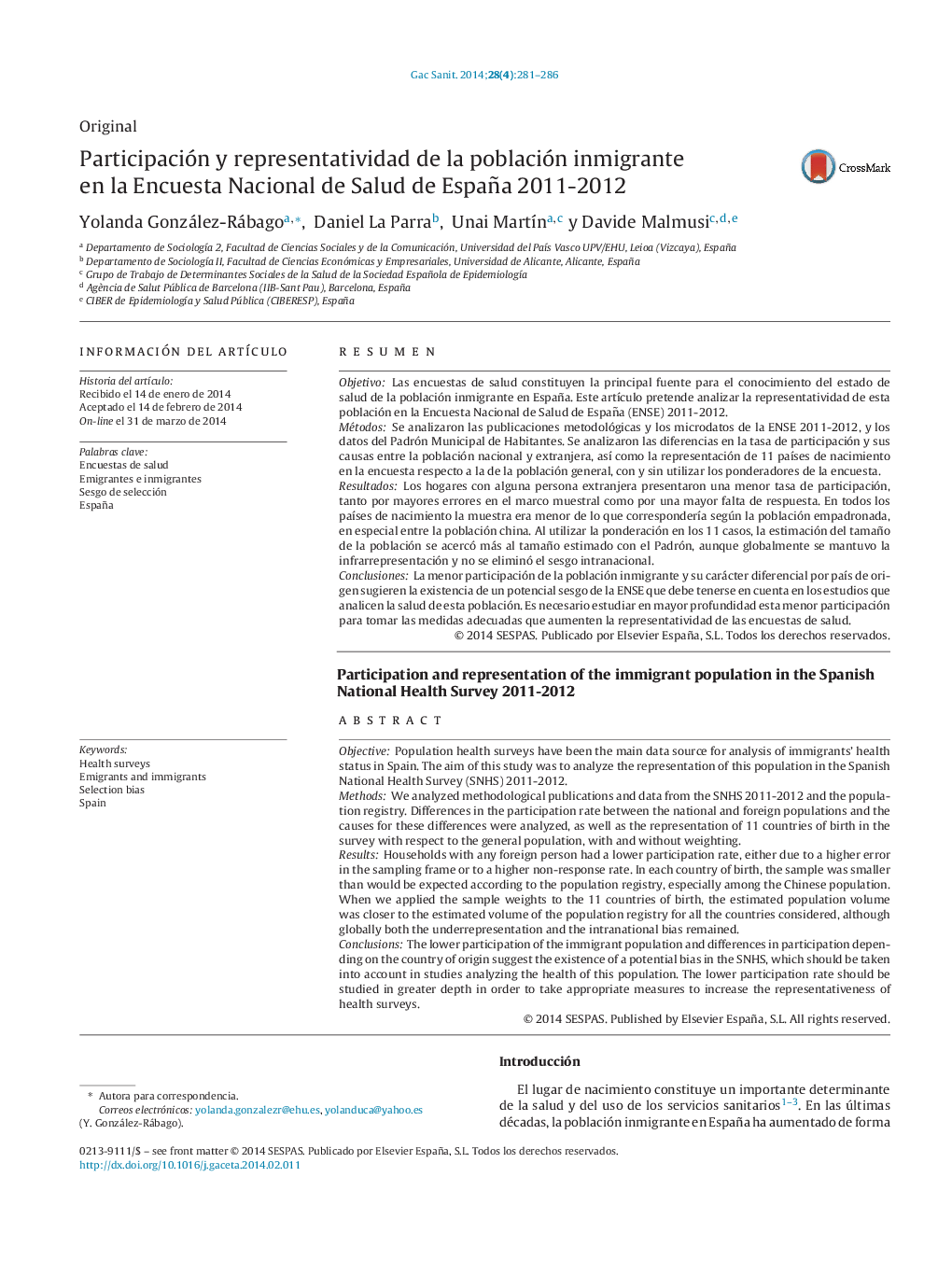| Article ID | Journal | Published Year | Pages | File Type |
|---|---|---|---|---|
| 1073269 | Gaceta Sanitaria | 2014 | 6 Pages |
ResumenObjetivoLas encuestas de salud constituyen la principal fuente para el conocimiento del estado de salud de la población inmigrante en España. Este artículo pretende analizar la representatividad de esta población en la Encuesta Nacional de Salud de España (ENSE) 2011-2012.MétodosSe analizaron las publicaciones metodológicas y los microdatos de la ENSE 2011-2012, y los datos del Padrón Municipal de Habitantes. Se analizaron las diferencias en la tasa de participación y sus causas entre la población nacional y extranjera, así como la representación de 11 países de nacimiento en la encuesta respecto a la de la población general, con y sin utilizar los ponderadores de la encuesta.ResultadosLos hogares con alguna persona extranjera presentaron una menor tasa de participación, tanto por mayores errores en el marco muestral como por una mayor falta de respuesta. En todos los países de nacimiento la muestra era menor de lo que correspondería según la población empadronada, en especial entre la población china. Al utilizar la ponderación en los 11 casos, la estimación del tamaño de la población se acercó más al tamaño estimado con el Padrón, aunque globalmente se mantuvo la infrarrepresentación y no se eliminó el sesgo intranacional.ConclusionesLa menor participación de la población inmigrante y su carácter diferencial por país de origen sugieren la existencia de un potencial sesgo de la ENSE que debe tenerse en cuenta en los estudios que analicen la salud de esta población. Es necesario estudiar en mayor profundidad esta menor participación para tomar las medidas adecuadas que aumenten la representatividad de las encuestas de salud.
ObjectivePopulation health surveys have been the main data source for analysis of immigrants’ health status in Spain. The aim of this study was to analyze the representation of this population in the Spanish National Health Survey (SNHS) 2011-2012.MethodsWe analyzed methodological publications and data from the SNHS 2011-2012 and the population registry. Differences in the participation rate between the national and foreign populations and the causes for these differences were analyzed, as well as the representation of 11 countries of birth in the survey with respect to the general population, with and without weighting.ResultsHouseholds with any foreign person had a lower participation rate, either due to a higher error in the sampling frame or to a higher non-response rate. In each country of birth, the sample was smaller than would be expected according to the population registry, especially among the Chinese population. When we applied the sample weights to the 11 countries of birth, the estimated population volume was closer to the estimated volume of the population registry for all the countries considered, although globally both the underrepresentation and the intranational bias remained.ConclusionsThe lower participation of the immigrant population and differences in participation depending on the country of origin suggest the existence of a potential bias in the SNHS, which should be taken into account in studies analyzing the health of this population. The lower participation rate should be studied in greater depth in order to take appropriate measures to increase the representativeness of health surveys.
